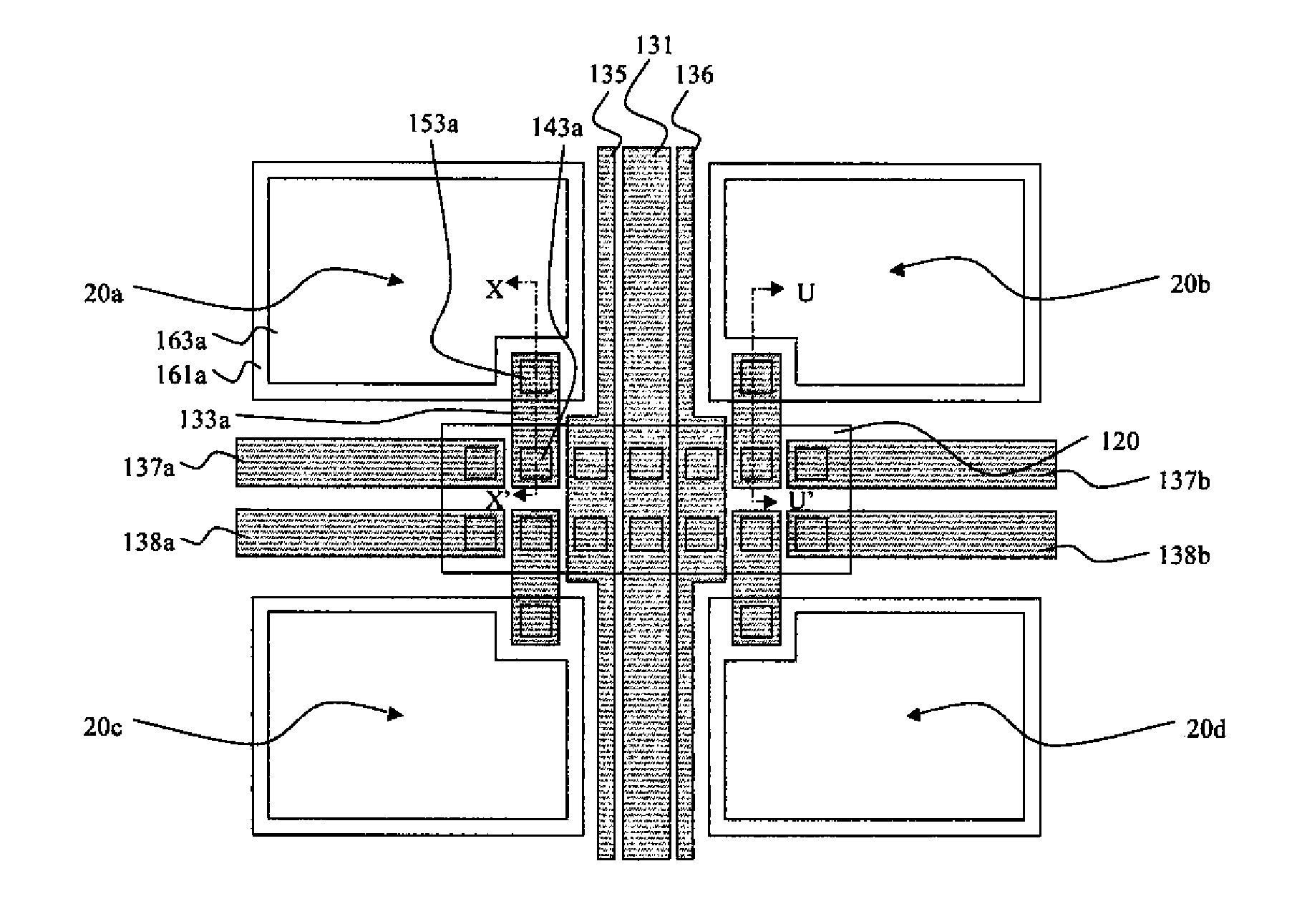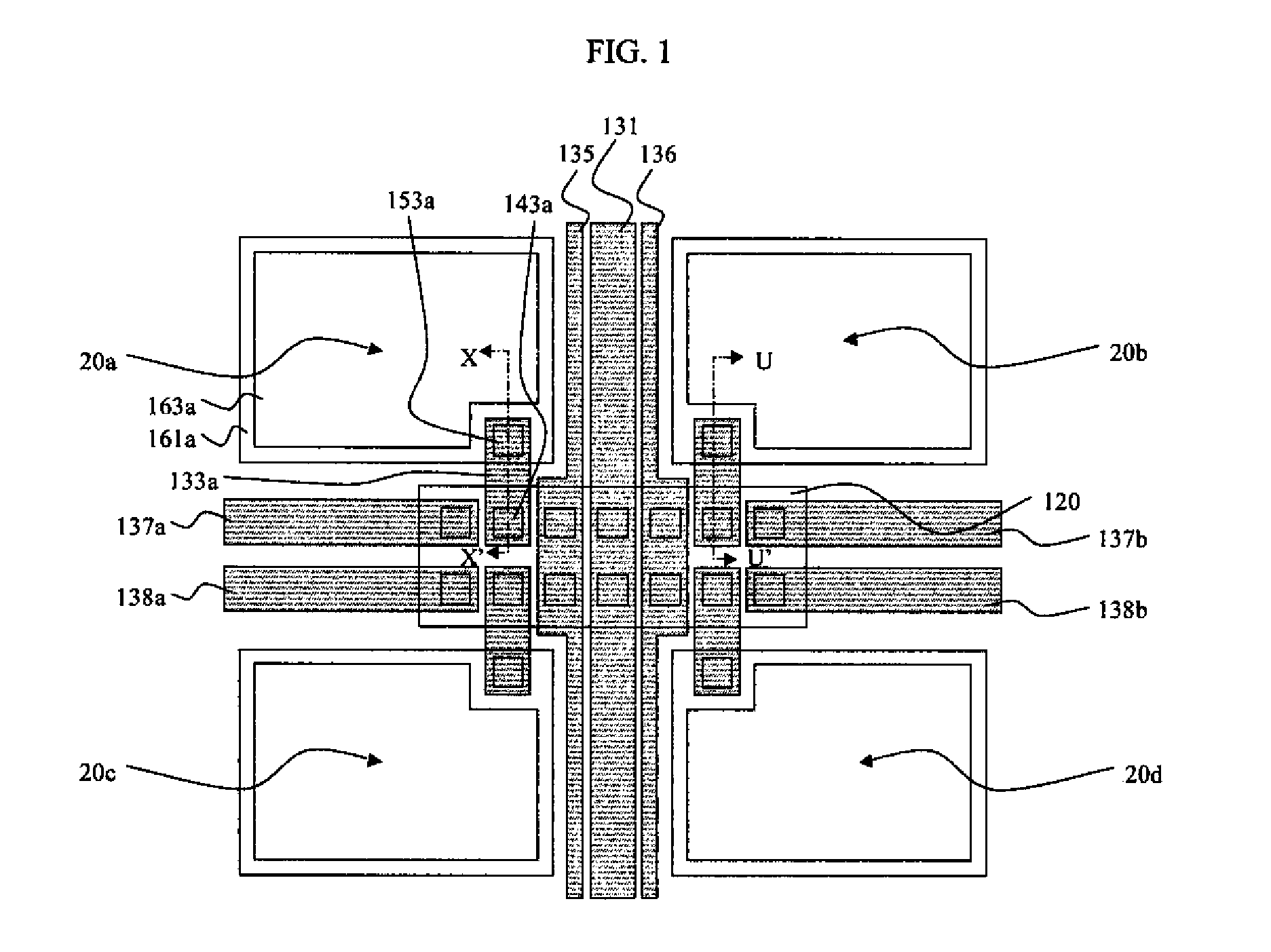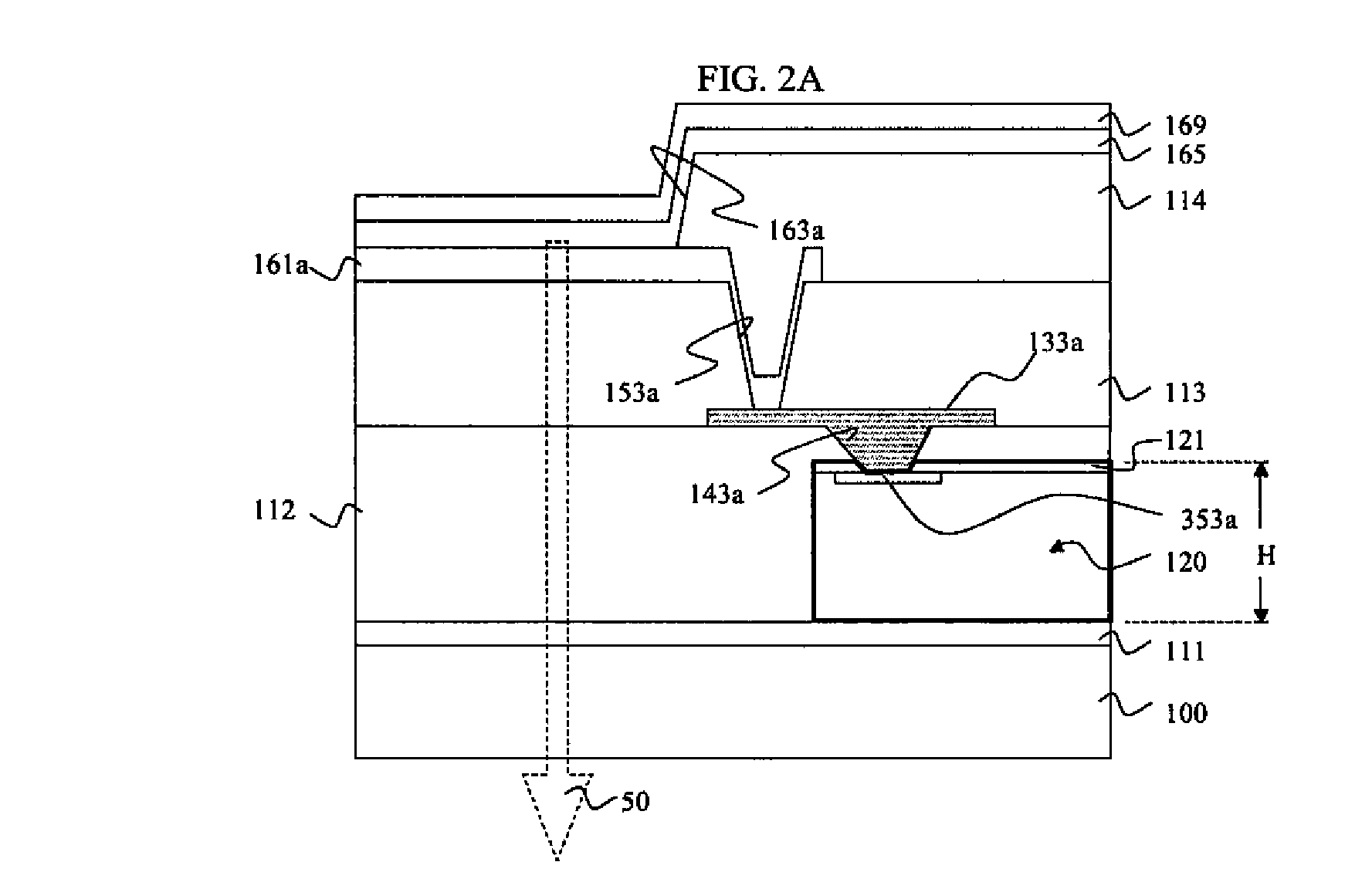OLED device with embedded chip driving
a technology of embedded chips and oled devices, which is applied in the direction of discharge tubes/lamp details, discharge tubes luminescent screens, electric discharge lamps, etc., can solve the problems of low oled display quality, and unstable amorphous silicon, etc., and achieve the effect of reducing the thickness of the display
- Summary
- Abstract
- Description
- Claims
- Application Information
AI Technical Summary
Benefits of technology
Problems solved by technology
Method used
Image
Examples
Embodiment Construction
[0028]FIG. 1 shows a layout view of a group of four pixels (20a, 20b, 20c and 20d) elements of an OLED display device according to the present invention. Each of the four pixels can be arranged to emit a different color, such as red, green, blue and white (RGBW). FIG. 1 represents a portion of a full display where the full display would be constructed of an array of such groups of pixels arranged in many rows and columns. For example, a modern television would be constructed having 1920 rows and 1080 columns of such groups of pixels.
[0029]A chiplet 120 is arranged to control the electrical current to pixels 20a, 20b, 20c and 20d. A chiplet is a separately fabricated integrated circuit which is mounted and embedded into the display device. Much like a conventional microchip (or chip) a chiplet is fabricated from a substrate and contains integrated transistors as well as insulator layers and conductor layers which are deposited and then patterned using photolithographic methods in a s...
PUM
 Login to View More
Login to View More Abstract
Description
Claims
Application Information
 Login to View More
Login to View More - R&D
- Intellectual Property
- Life Sciences
- Materials
- Tech Scout
- Unparalleled Data Quality
- Higher Quality Content
- 60% Fewer Hallucinations
Browse by: Latest US Patents, China's latest patents, Technical Efficacy Thesaurus, Application Domain, Technology Topic, Popular Technical Reports.
© 2025 PatSnap. All rights reserved.Legal|Privacy policy|Modern Slavery Act Transparency Statement|Sitemap|About US| Contact US: help@patsnap.com



